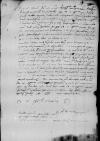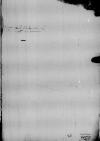Letter #1872
Ioannes DANTISCUS to Tiedemann GIESEAllenstein (Olsztyn), 1538-07-13
English register:
Dantiscus is happy about Giese’s letter and his good health.
The previous day he wrote briefly from Hohenstein (Olsztynek) about how their joint affairs were going; he advises Giese to stay positive – when the bulls finally arrive, their enemies will have more cause for regret than joy. Dantiscus promises to act in consultation with Giese and not to neglect anything that will serve to speed up Giese’s confirmation. He assures Giese of his friendship and favour.
So as not to exhaust himself and the horses, many of which he had to leave on the way, he stopped in Allenstein (Olsztyn) to stay with the Provost [Paweł Snopek?], who received him in a very friendly manner.
In jest, Dantiscus demands to know the price of the gift received.
He is sending Giese a draft of reforms of the Church, authored by certain cardinals, with commentary by a Lutheran [Johannes Sturm]. He asks for the text to be returned when the opportunity arises.
Manuscript sources:
Prints:
| ||||||
Text & apparatus & commentaryPlain textText & commentaryText & apparatus
Reverendissimo Domino
Reverendissime Domine, frater et amice carissime ac honoran(de) or honoran(dissime)⌈honoran(de)honoran(de) or honoran(dissime)⌉.
Salutem fraternique amoris commendationem.
Quod Dominatio Vestra Reverendissima me cf.
1538-07-12⌊Heri1538-07-12⌋ ex
De me, quod coepit, indies sibi firmius persuadeat in amando Dominatione Vestra Reverendissima me cessurum nemini. In iis paulopost diffusius a me scribetur Dominationi Vestrae Reverendissimae. Quam diutissime optime valere cupio ex animo.
Venerabilis dominus hic probably
De munere mihi donato velim mihi Dominatio Vestra Reverendissima numera written over ...⌈... illegible⌈...... illegible⌉aa written over ...⌉ret pretium, quod fratri meo
Dominationem Vestram Reverendissimam iterum felicissime valere precor et opto.
Ex
Dominationis Vestrae Reverendissimae frater integerrimus,
Postscript:
Mitto „Consilium quorundam cardinalium de reformanda ecclesia” et
[1] Dantiscus refers here to a critical report (Consilium de emendanda Ecclesia) by the papal commission examining errors and abuses of the Catholic Church. The chairman of the commission was Cardinal


 BCz, 245, p. 42
BCz, 245, p. 42